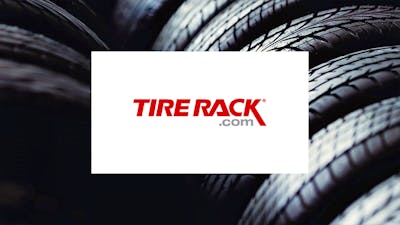Best Tires for Cars / Sedans for 2024
Our vehicles are a significant part of our lives and one of the most important pieces of safety equipment on them are the tires. We expect hassle-free service, reliability, and long life from our car’s tires. To get these things, we need to pick the right set for our vehicle and its needs, alongside tires that match our driving habits and climate.
Get the Best Deals on Tires
Most coupes, sedans, and hatchbacks have the same things in common when it comes to tire choices. These include traction and treadwear types that are geared towards lower, lighter-weight vehicles and more agile performance when compared to the heavier trucks and sport utilities on the market.
In this article, we are looking at the top choices for tire brand and model for cars (including sedans, hatchbacks, wagons, coupes, and convertibles). Choices were made based on several data points, feedback from mechanic’s files, and more as part of our Best Tires Golden Wrench Awards. The following are the winners in the car category.
Car Talk's Methodology
All of these tire picks were ranked using Car Talk's unique methodology based on over 30 different data points:
Consumer Satisfaction: Consumers provided data about what their experience was using tire models within each of these brands.
Industry Professionals: Car Talk researchers performed a nation-wide survey of over 800 mechanics and industry professionals for their opinions.
Government Reporting: Statistics reported for safety and durability.
Tire Quality and Engineering: A tire brand’s overall quality and engineering or innovation influenced a consumer’s decision to purchase.
Performance: Car Talk looked at how tires from these particular brands performed in a variety of weather conditions.
The Best Tires for Your Car/Sedan
Michelin CrossClimate 2
Michelin’s CrossClimate series are tires made specifically as Grand Touring All-Season options for cars, SUVs, and trucks. The CrossClimate 2 for cars features Michelin’s Thermal Adaptive tread design engineered to direct moisture away from the surface contacting rubber and provide maximum grip in all weather situations. The unique look of the tread on the CrossClimate series is eye-catching and immediately recognizable.
- All-weather traction
- Noise reduction on the road
- Available sizes: 16” - 17” from 205/45 to 235/65
Continental PureContact LS
Continental’s PureContact series are tires made specifically for all-season use in a Grand Touring format. This series has been around for decades, but the latest generation features several upgrades thanks to materials advancements. One of the most interesting of those are temperature-activated polymers in the tread compound that change the tread’s response to the road based on the temperature of its surface.
- Traction-enhancing Silane and sipes
- Evolutionary design for single ply
- Available sizes: 16” - 20” from to 195/55 to 245/45
Yokohama AVID Ascend GT
Yokohama is most well known for long tread life and value. Yet with the AVID Ascend line, the company has taken a Grand Touring All-Season and added confidence to the longevity mix. Where others on this list are true all-season tires meant for nearly all weather conditions (barring heavy ice and snow), however, the AVID Ascend GT model is more a three-season tire with less concentration on snow performance. Hence the tire’s profile is very similar to truck and SUV GT tires rather than to what is seen on other tires on this list.
- Long tread life expectancy
- Simple and effective asymmetric tread pattern
- Available sizes: 15” - 20” from 175/65 to 245/45
Bridgestone Turanza Quiettrack
The Turanza line of tires from Bridgestone are Grand Touring designs aimed for various markets and vehicles. The Turanza Quiettrack tire was specifically developed as an all-season GT with emphasis on refinement in drive experience. Listed as an all-season, the Turanza Quiettrack is more of a three-season in a more traditional tread pattern format. Unique to the Quiettrack, however, are the in-groove quiet track additions and non-chamfered shoulders along with materials that dampen pitch sequences to improve noise reduction.
- Excellent noise reduction and comfort
- Unique shoulder slots improve hydroplaning performance
- Available sizes: 15” - 20” from 195/65 to 245/45
Pirelli Cinturato P7 All Season Plus II
Pirelli is most well known for performance tires and with the Cinturato P7 tire, the company promises all-season Grand Touring coupled with its legendary handling characteristics. The Cinturato P7 All Season Plus II tire is aimed towards environmental friendliness and low rolling resistance. Noise reduction and all-season performance are also features, especially wet weather and wet braking characteristics.
- Slotted towards higher speed driving
- Low weight and rolling resistance features
- Available sizes: 16” - 20” from 195/55 to 245/45
Goodyear Assurance WeatherReady
Goodyear’s Assurance WeatherReady line of tires has been a mainstay in Grand Touring All-Season tires for years. The latest-generation of the tire uses an environmentally-friendly soy-based compound which aims for all-weather capability and has proven effective in that goal. A bit louder and less long-lived when compared to others, the Assurance WeatherReady line nevertheless receives a podium spot here for its overall excellence.
- Unique Zigzag Biting Edges provide good ice and snow performance
- Blades and grooves give high levels of grip in most conditions
- Available sizes: 15” - 20” from 195/65 to 255/55
Firestone WeatherGrip
A more general purpose aim from Firestone is found in the long-lived WeatherGrip franchise of tires. This is Firestone’s most well-known Grand Touring option and it enjoys a reputation for true all-weather capability. The rounded footprint pushes through standing water easily and the light chamfer on the edges adds grip on ice. The center stripes are clearly aimed towards road-going comfort and all-weather grip with wide channels for pushing snow and water away from the gripping surfaces.
- Long life and true all-weather usage
- Well-known and understood tire
- Available sizes: 15” - 19” from 195/60 to 235/55
Hankook Kinergy GT HRS- Writers Pick and Honorable Mention
Performance-oriented drivers will know the Hankook name. Among the tires winning our awards are many great choices, but none are truly performance-oriented like the Hankook Kinergy GT HRS. Sport coupe, convertible, and sports car drivers will like the feel and good all-season option that these Hankooks provide.
- Performance-oriented for sport driving
- All-season to light snow application
- Available sizes: 17” - 18” from 205/55 to 225/60
What Are Car/Sedan Tires?
Tires for a car, such as a sedan, station wagon, coupe, or convertible are sized for passenger vehicles that fit those size and weight descriptions. Unlike a crossover, SUV, minivan, or pickup truck, cars and sedans require tires meant for vehicles of lighter weight and with the unique weight distribution found in cars.
Because a car is lower to the ground with a lower center of gravity, it puts different forces on a tire than does a taller vehicle like an SUV. This means the tire’s composition needs to be different to handle the difference in physics.
Most cars have wheel sizes ranging from about 15 inches in diameter to 20 inches. The “hole” that makes the donut shape of a tire is made to accommodate that wheel. Tire widths vary, with most cars having 195 to 225 millimeter sections (tread widths). The height of the tire, being a ratio of its width, will vary according to the car’s engineering. Most are about 55-80 millimeters in height.
Most car tires are aimed towards the Grand Touring ideal of ride comfort and long tread life.
When To Buy Tires for Your Car/Sedan?
Three things are the enemy of tires everywhere: wear and tear, time, and road hazards. The first two, you as the car’s owner have complete control over. The third? Well, that’s why we buy spares.
Tread wear happens to all tires with use. As the rubber meets the road, some of it gets left behind. This slow wearing of the tread on the tire eventually makes it so thin that it becomes ineffective. Unlike perfectly dry and carefully surfaced drag strip tarmac where near-treadless tires are excellent, our everyday roads have variations in surface affected by materials used, maintenance (or lack thereof), and weather. So having little to no tread is not a good thing for us regular folk.
How to measure how much tread life is left is a fun exercise in cultural mythology as there are a myriad of “rules of thumb” available. Ask five mechanics how to measure tread life and you’ll get four answers. The fifth will tell you that if you have to ask, you probably just need new tires. There’s wisdom in that.
The most well-known and most often used method is to put a penny in it. In the 1960s and 1970s, this method was great. “If Lincoln’s hair is exposed, you need new tread.” Today, however, that’s not so accurate. Almost all tires now have depth indicators built into the tread. When these are close to being exposed to the road’s surface, the tires are worn out.
What is the Cost of Car/Sedan Tires?
The average sedan has a wheel size of 18 inches. Tire prices range from about $106 to over $300 for this wheel size. Most buyers can expect to pay about $140 per tire for replacements for their car.
When You Should Replace Your Car/Sedan Tires?
As mentioned above, the three things that affect car tires are wear, time, and road hazards. The wear on a vehicle’s tires happens with use and is the usual indicator of new tires being required. Time, however, is another reason.
For vehicles that see fewer miles per set of tires, the replacement criteria will be based on time. Most car tires have a shelf or use life of five years. This is reflected on a small DOT stamp all tires sold in the U.S. must include. The stamp has three sets of four numbers, the last set of which is the week/year the tire was made. The tire’s lifespan is five years from that date.
A tire with a DOT sequence ending in 0521 was made in the week of January 31, 2021. It’s expiration date would therefore be in the fifth week (February 1) of 2026.
The expiration date is based on the tire’s composition and the compounds used to protect it from the elements. Specifically the sun’s UV rays. Time and exposure break down those protective components and expose the tire to drying and cracking that will eventually lead to failure.
Read more on the Best Tire Deals available here.
See our overall recommendations for Best Tires
See our recommendations for the 10 Best Tire Brands for 2024
Shop Tires Online and Save
Online tire prices are usually less than in store














